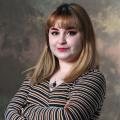
A RARE piece of machinery made by John Logie Baird and used by the Helensburgh man in his very earliest TV transmissions has been put on display in his home town.
The 'Baird Type A Receiver' was bought for the town by the Helensburgh Heritage Trust as plans begin to gather pace to mark the centenary of Baird's first ever transmission of TV images in the town where he was born.
The Trust paid £10,000 for the device, which Baird designed so that people could listen to sound at the same time as viewing the moving pictures - something generations of TV owners have taken for granted, but which wasn't possible in those pioneering days.
The sound receiver has been put on display in the upper floor at Helensburgh Library, alongside one of those early TV screens - which Baird named a 'televisor', rather than a television.
When television was first created, pictures and audio were transmitted separately so a screen – known as a televisor – and audio receiver were both required.
However, since common radios could be used to broadcast sound for the televisor, very few receivers were sold and made.

Trustee Stewart Noble said: “In the early days of television, the sound and the pictures were transmitted separately and so you had to have a televisor to see the picture.
“As far as the sound was concerned, you could ether buy a Baird type A Receiver, or you could just link up radio to it.
“Most people just went for the radio as it wasn’t difficult to do, and it was a lot cheaper, so very few Baird Type A receivers were actually made.
“We just bought one, and it is on display, alongside the televisor, in the cabinet upstairs in the library.
“It cost us £10,000, which is by far the most we’ve paid for a device.
“We had quite a bit of money sitting in our bank anyway, just in case we were going to buy something - but even then, we had to raise some more money just to get us over the line for it.”

The trust used £8,000 from its own funds, but had to raise the extra £2,000 via an appeal to members.
The purchase of the receiver comes as the John Logie Baird Centenary Trust prepares to mark 100 years since Baird's pioneering TV transmissions.
An exhibition curated by the inventor’s grandson, an audio-visual display and a school programme all form part of the trust's proposals
Before the plans get under way, the trust is urging anyone interested in volunteering to get in touch.
People are needed to help with scheduling, programming, marketing, creating a website, and especially fund-raising.
The trust is also on the search for a new chair to lead the group, as their current chairman, Henry Boswell, is having to step down from his role due to work commitments.
Those who are interested in volunteering at the centenary celebrations should contact trustee Norman Muir, convener of Helensburgh Community Council, on convener@helensburghcc.org.

Baird was born at the family's home on the town's West Argyle Street on August 13, 1888, and carried out many of his early scientific experiments there.
There's some doubt over when exactly the TV centenary should be marked - the inventor transmitted the first television pictures in a laboratory on October 2, 1925, using a ventriloquist's dummy called 'Stookie Bill'.
It wasn't until the following year that he gave his first public demonstration of television images, in front of an audience of scientists, reporters and other public figures in London.
The JLB Centenary Trust has opted to mark the occasion in 2025.
Baird lived for most of his adult life in the south of England and died in Bexhill-on-Sea on June 14, 1946.
He is buried beside his parents in Helensburgh Cemetery.



Comments: Our rules
We want our comments to be a lively and valuable part of our community - a place where readers can debate and engage with the most important local issues. The ability to comment on our stories is a privilege, not a right, however, and that privilege may be withdrawn if it is abused or misused.
Please report any comments that break our rules.
Read the rules here